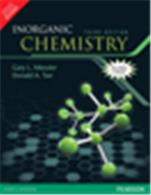Inorganic Chemistry, 3/e

|
Author(s):
Author:
Gary Miessler
- ISBN:9788131718858
- 10 Digit ISBN:8131718859
-
Price:Rs. 1130.00
- Pages:720
- Imprint:Pearson Education
- Binding:Paperback
- Status:Available
-
|
This highly readable text provides the essentials of Inorganic Chemistry at a level that is neither too high (for novice students) nor too low (for advanced students). It has been praised for its coverage of theoretical inorganic chemistry. It discusses molecular symmetry earlier than other texts and builds on this foundation in later chapters. Plenty of supporting book references encourage instructors and students to further explore topics of interest.
Table of Content
- Introduction to Inorganic Chemistry.
- Atomic Structure.
- Simple Bonding Theory.
- Symmetry and Group Theory.
- Molecular Orbitals.
- Acid-Base and Donor-Acceptor Chemistry.
- The Crystalline Solid State.
- Chemistry of the Main Group Elements.
- Coordination Chemistry I: Structures and Isomers.
- Coordination Chemistry II: Bonding.
- Coordination Chemistry III: Electronic Spectra.
- Coordination Chemistry IV: Reactions and Mechanisms.
- Organometallic Chemistry.
- Organometallic Reactions and Catalysis.
- Parallels Between Main Group and Organometallic Chemistry.
- Bioinorganic and Environmental Chemistry.
|
Salient Features
- NEW - Coverage of oxidation-reduction reactions.
- NEW - Updated and reorganized material throughout—Includes recent literature references.
- NEW - Web-based problems.
- NEW - Problems using software for molecular orbital calculations.
- Excellent, balanced coverage of core principles and theory.
- Integration of symmetry arguments throughout—Emphasizes symmetry more than other inorganic texts.
- Many problems at the end of each chapter—Including some from the recent literature.
- Worked examples in most chapters.
- Exercises in most chapters.
- Strong molecular symmetry/group theory coverage.
- Strong molecular-orbital approach.
- Special topic coverage—e.g., organometallic, solid-state chemistry, bioinorganic, and environmental inorganic.
|
|
|
|
|